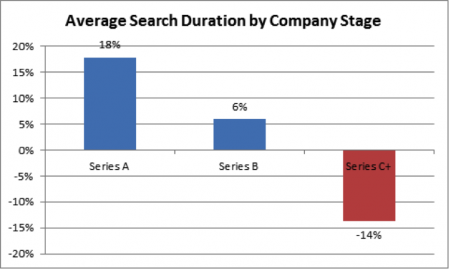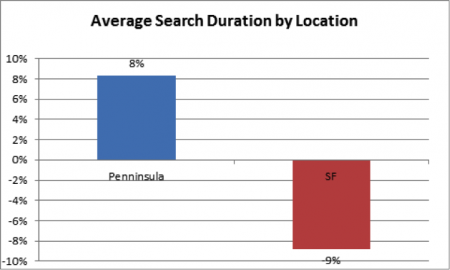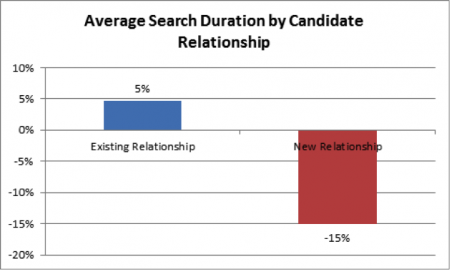Continuing with our Scaling Talent series, Kevin Buckby from executive search firm, Riviera Partners, is our guest blogger this week taking a closer look at the right time to hire.
Talent acquisition is rightly regarded as a strategic issue. Start-ups are born out of innovation and ideas are given life through the infusion of capital, but companies are built by people. In this piece I look at how environmental factors impact executive-level time to hire.
Innovation is abundant and new entrepreneurs are stepping forward all the time—witness Nick D’Aloisio, who took his idea for Summly from launch to acquisition by Yahoo! for $30M, all before his 18th birthday. What was previously the preserve of MBA-trained and industry-hardened executives is now open to all comers. Repeat entrepreneurs, reinvigorated, not satiated, by success return time and again with fresh start-up ideas. All these people need people.
Removing obstacles for entrepreneurs has created vibrant economic conditions in the Bay Area technology industry, along with an unprecedented demand for talent. Those start-ups that evolve beyond the stage of testing an idea and embark on the journey of scaling a company immediately confront one of their most significant challenges: acquiring high-quality talent in a grossly imbalanced labor market.
Entrepreneurs should be thinking strategically about their executive hiring needs and forecasting requirements accordingly. In reality, however, the pace of change for most start-ups is such that executive hiring decisions can move from awareness to need in a matter of days. In this context, time to hire becomes critical, and is a KPI we track in terms of days from search-launch to candidate start-date.
At Riviera Partners we focus on three key strategic e-staff hires: those individuals tasked with defining, building and taking to market software products. Like our entrepreneur clients, we measure and correlate our success with a variety of criteria. We are very familiar with the tension entrepreneurs face when striving for the best available talent balanced against the time taken to have the executive on-board and productive. Anybody involved in executive hiring in the Bay Area will have their own ideas of what impacts time to hire, but here we’ll show the environment factors that create the swings in our data.
Bigger = Slower
We looked at time to hire based on stage of company, and the evidence is conclusive: the more mature the organization the longer it takes to complete the hire. The difference between Series A and later-stage companies is stark. Series A companies necessarily limit the number of decision makers and as a result time to hire is almost 20% faster than the baseline average. The more convoluted recruitment process associated with later-stage companies extends time to hire by an average of 14%. Limiting the number of decision makers is easy in a small company, but later stage companies should take note of the penalty they suffer as they involve a greater number of people in their hiring decisions.

Location, Location, Location
Viewed from afar, the subtle nuances between locations for a start-up within the wider Bay Area seem as far-fetched as the myriad of micro-climates claimed within a 10 block radius in San Francisco. The data would suggest, however, that there really is a significant difference in time to hire between those start-ups in the city and those on the peninsula. The jury’s still out on the micro-climate debate.
Companies have been migrating up the peninsula to SF for some time now, leading to the wholesale regeneration of SOMA and the creation of a new tech scene. Those entrepreneurs who are attracted by San Francisco’s vibrant community of entrepreneurs and start-ups are confronted with scarce space, SOMA rents, and an exodus of mid-career executives heading south and east as they flee the city’s rising property prices and declining public schools.

The relative scarcity of executive-level talent resident in the city extends San Francisco companies’ time to hire by a punitive 9% over baseline, whereas those companies on the peninsula that are within easy reach of desirable neighborhoods benefit from hiring processes that execute 8% quicker than average.
While the data is clear that executive level hiring is adversely effected by being in the city, anecdotal evidence from the hundreds of individual contributor placements made by Riviera each year strongly suggests that young engineers prefer working in San Francisco over anywhere else. By choosing to place your start up outside San Francisco you may find it easier to compete for the best executive talent, but will find it harder to do the same for the best engineers.
Friends with Benefits
At Riviera we encourage our recruiters to get out into the field and build relationships face-to face with the top executive talent. This requires investing time in people even when there may not be an immediate opportunity for that candidate. By taking a long-term view on the value of relationships we are making an assumption that those relationships ultimately translate into value for us and our clients. In a world where LinkedIn provides ultimate transparency, we believe it’s no longer about who you know, but how well you know them. We tested this assumption by looking at the impact trusted relationships have on time to hire.

Riviera’s investment in relationships is vindicated by the data, but founders and entrepreneurs should take note too. Start-ups are a risky business, and while differentiated technology and a massive potential market are necessary, it’s the trust that originates from a relationship that has been nurtured over time that can often be the decisive factor for candidates. The next time someone suggests you meet that killer product/marketing/engineering gal, remember what return you might make from investing in that cup of coffee.